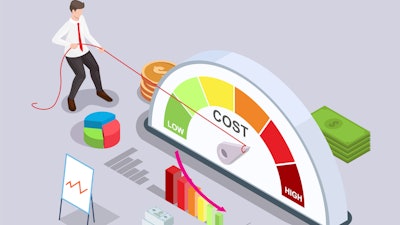
In the past, pricing extended to distributors from manufacturers was mostly steady-state and static; pricing schedules were issued at the start of the year and were normally not altered all that much until the following year. However, the hectic supply chain environment we’ve been experiencing since the onset of the pandemic has led to suppliers and manufacturers hiking prices at an inordinate rate. Most distributors are experiencing rapid-fire price increases – oftentimes faster than they can keep up with.
It’s said that he (or she) who hesitates is lost; this is especially so when it comes to distributors who can’t react fast enough to respond to these tumultuous market conditions. Every day you don’t react to a manufacturer price increase can be a day of lost profits. Distributors must raise the price of their products to cover their own costs and to make a profit; if the math is wrong, they can quickly see their profits erode.
To keep pace with these market dynamics, distributors need to change the way they price inventory at the customer level more than ever before. This involves changing your sales mindset — a transition that can be challenging, and which requires some doing. However, to weigh the value of changing up your approach, you must consider the opportunity cost of staying the course or resisting this change.
Ask yourself: Are your pricing strategies governed by the path of least resistance or the application of best practices? Pricing strategies are often predicated on a salesperson’s gutfeel and/or a “get what you think you can” mentality. Salespeople may have authority to do pricing overrides without much guidance beyond their own experience. The challenge is that everyone’s experiences, anecdotal evidence and vision for successful pricing are seldom aligned.
Pricing is the most critical element of profitability and customer relationships — that’s why you need to take control, and that’s what “intelligent pricing practices” are all about.
Making Pricing Smarter, More Efficient & More Effective
Data analytics has been a game changer in many areas of our lives, with the net result being smarter, data-driven approaches to optimize efforts and produce the best outcomes. At the foundation of intelligent pricing practices is data analytics.
A few years ago, a study was done of golfers of varying status, from pros to amateurs. The study collected 225 terabytes of swing data and analyzed over 13,000 golf swings. Analytics was able to derive insights from this large body of information as to what makes one golfer better than another and the differences between the best and worst golfers. The result of this analysis: Conclusive, data-driven evidence as to what actions improve one’s performance on the range.
In much the same way, distributors are using data analysis to forge intelligent pricing practices to assess the right price to drive the most profitability. When you’re dealing with thousands of customers of varying types and hundreds of thousands of products, it’s impossible to keep track of all the data points and make sense of it manually.
Plus, there’s the issue of the “middle.” We all celebrate the large high-profit orders and we all know to avoid the low-margin orders. But what about all those orders in between? The ones that don’t hit your radar screen? How do you know what you can and should charge?
Now more than ever, distributors need to see where margins are eroding and where opportunities exist to boost profits. Relying on sales data and customer and product segmentation for data-driven guidance is what constitutes intelligent pricing practices. Pricing optimization software offers visibility into those opportunities, and it can also make the pricing update process much more efficient and effective.
Getting Started, Gaining Momentum
So, how do distributors get started putting intelligent pricing practices in place? And how do they encourage buy-in with their sales teams?
The first step is bringing in the right expertise to segment your customers correctly. Most distributors have some sort of customer segmentation in place, but it’s generally not nuanced enough to be effective. By doing a deep analysis of your customers and their buying behaviors, you can connect the right pricing with the right customers. Getting your customer segmentation right gives your salespeople a reason to believe in the pricing that pops up on the computer.
Be transparent to build a culture of trust in the system. Use your sales and customer data to look for opportunities where you can improve. Involve your sales staff in this process so they are active participants in the game plan and empowered to execute on these opportunities. Seeing is believing!
Don’t boil the ocean; make incremental changes. It’s important to make sure that you don’t drown people in the wake of big waves of change. Making a series of small changes over a period of time is easier to institute a culture of change, allowing time for data collection, measurement and socialization of the results of those changes. This will provide the proof points for “wins” that can go a long way to make the continued case for change.
Greater Visibility Yields Improved Agility
I have no idea when supply chain issues are going to relax or what will be in store for us after that, but I do know that every distributor is going to want to have visibility into how their businesses are performing as it happens, to make micro and macro adjustments.
Savvy distributors are taking the steps to carefully adjust their pricing and profitability. The result is that most distributors enjoy a 2-4% margin gain by engaging this way, and this makes it well worth the investment.
When you put intelligent pricing practices in place, you will find surprises in the assumptions you thought were true. This visibility will allow you to make the necessary course corrections and run your business with greater certainty — benefits that in today’s business environment are priceless.
Brian Friedle is the vice president of business development, White Cup.






















